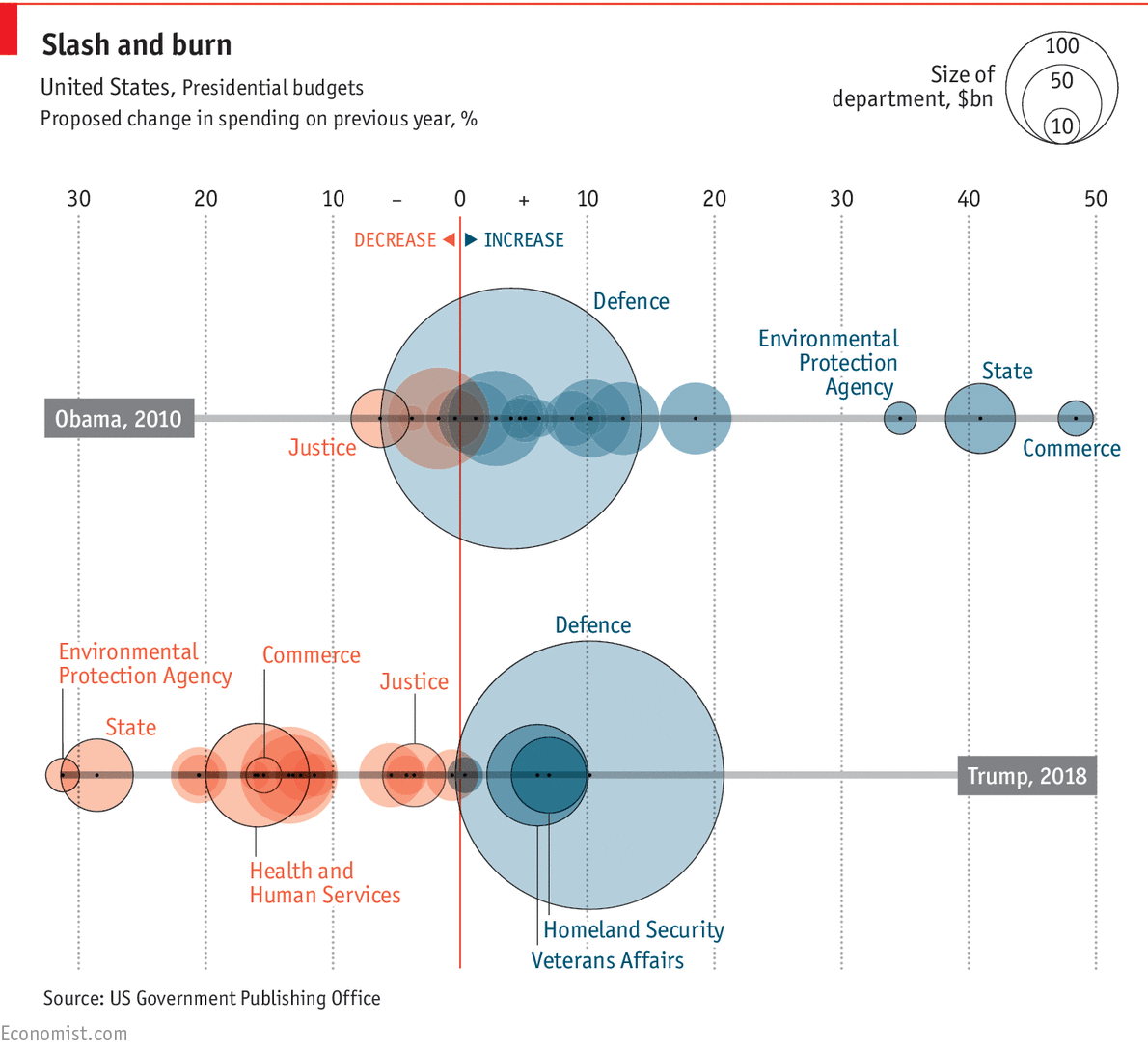The Economist produced this graphic which shows the radical shift in US budget policy and says it shows a move to “deconstruct the administrative state”.

STEPHEN BANNON, President Donald Trump’s chief strategist, famously promised the “deconstruction of the administrative state”. On March 16th, the Trump administration took its first step toward achieving Mr Bannon’s vision by proposing a budget that makes steep cuts to domestic programmes.
Not all departments would suffer. Mr Trump’s budget proposal, which covers $1.1trn of discretionary spending for the 2018 fiscal year, requests an additional $52bn for the Department of Defence and $2.8bn for the Department of Homeland Security. The majority of this additional spending would go towards what the administration calls “urgent warfighting readiness needs” including fighter jets, drones, missiles and weapons systems. At least $2.6bn would be spent on the construction of a wall on the southern border, a project which could eventually cost as much as $22bn. An additional $1.5bn would go towards the expanded detention, transport and removal of illegal immigrants.
To pay for this build-up in defence and border protection, Mr Trump would slash budgets across the federal government. Under his proposal, with a familar title of “America First: A Budget Blueprint to Make America Great Again,” the Department of Health and Human Services would be cut by $13bn or 16%, the State Department would lose $11bn or 29% and the Department of Education would see its funding fall $9bn or 14%. The Environmental Protection Agency, widely expected to face the steepest cuts under the Trump administration, would be reduced by a whopping 31%, eliminating 50 programmes and 3,200 jobs.
How Mr Trump’s budget would affect the broader economy is still unclear. Despite calling the national debt a “crisis”, the proposal would keep overall spending at roughly the same level. Given Mr Trump’s zeal for tax cuts and frequent promise for massive infrastructure spending, deficits may even increase. The administration will not release its full budget—complete with ten-year spending and revenue projections—until May.
Of course, the president’s budget is only a wish list. It is Congress that ultimately controls the government’s purse strings. And at the moment, many lawmakers are wary of deconstructing the administrative state just yet. When asked on February 28th about the Trump administration’s proposed cuts to the State Department, Senator Lindsey Graham of South Carolina told reporters the president’s budget is “dead on arrival”.
